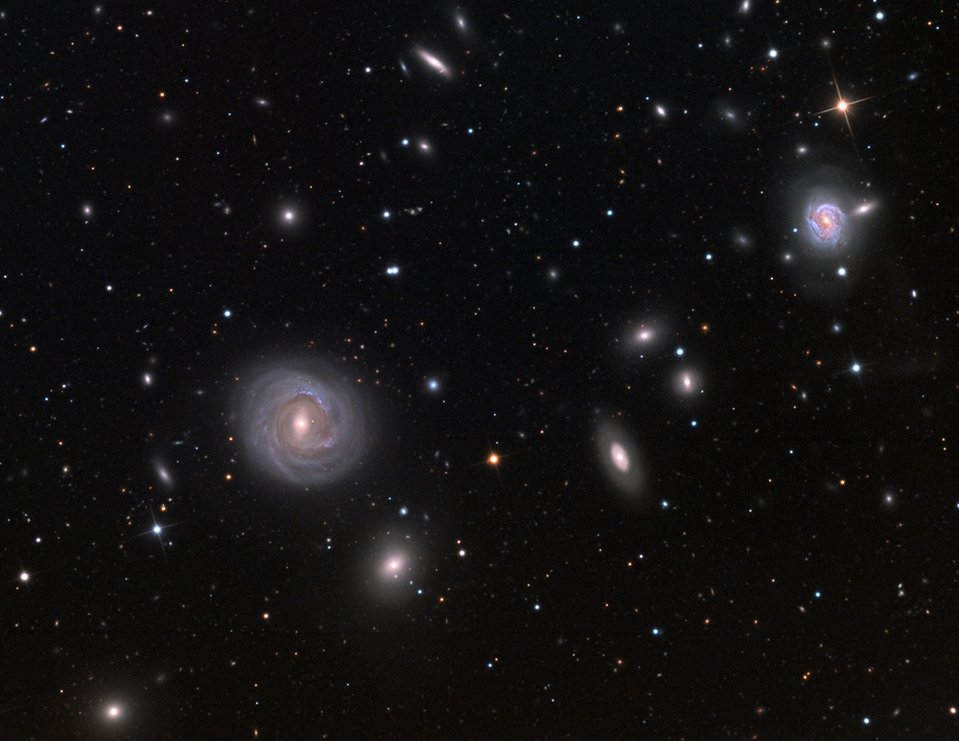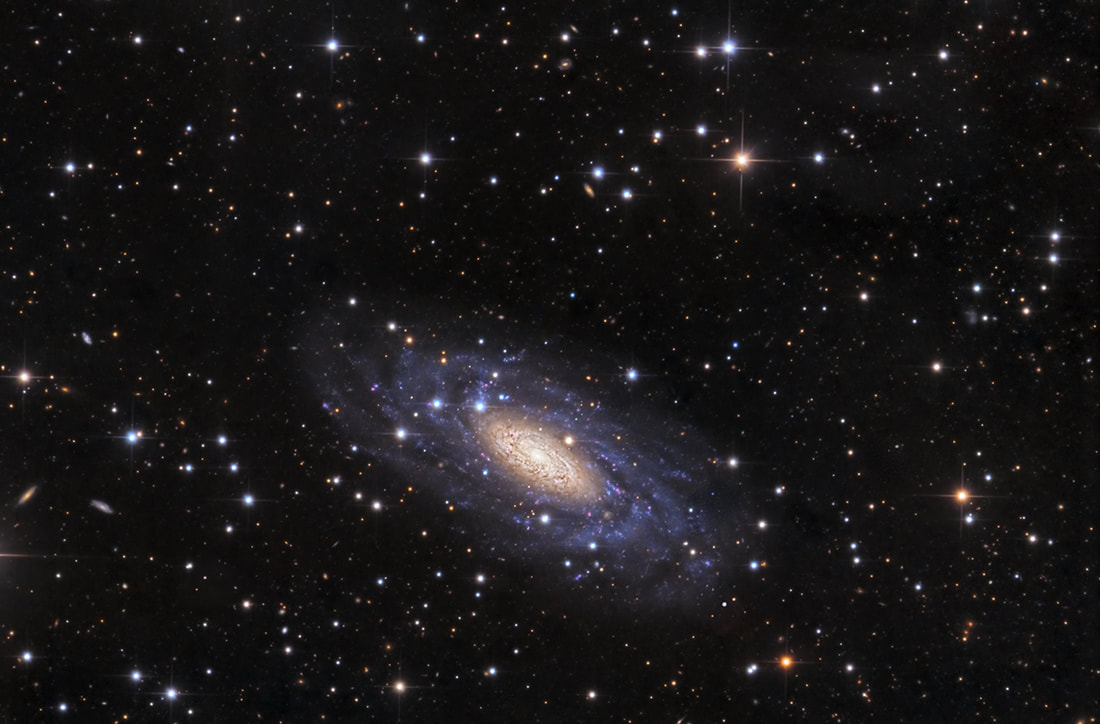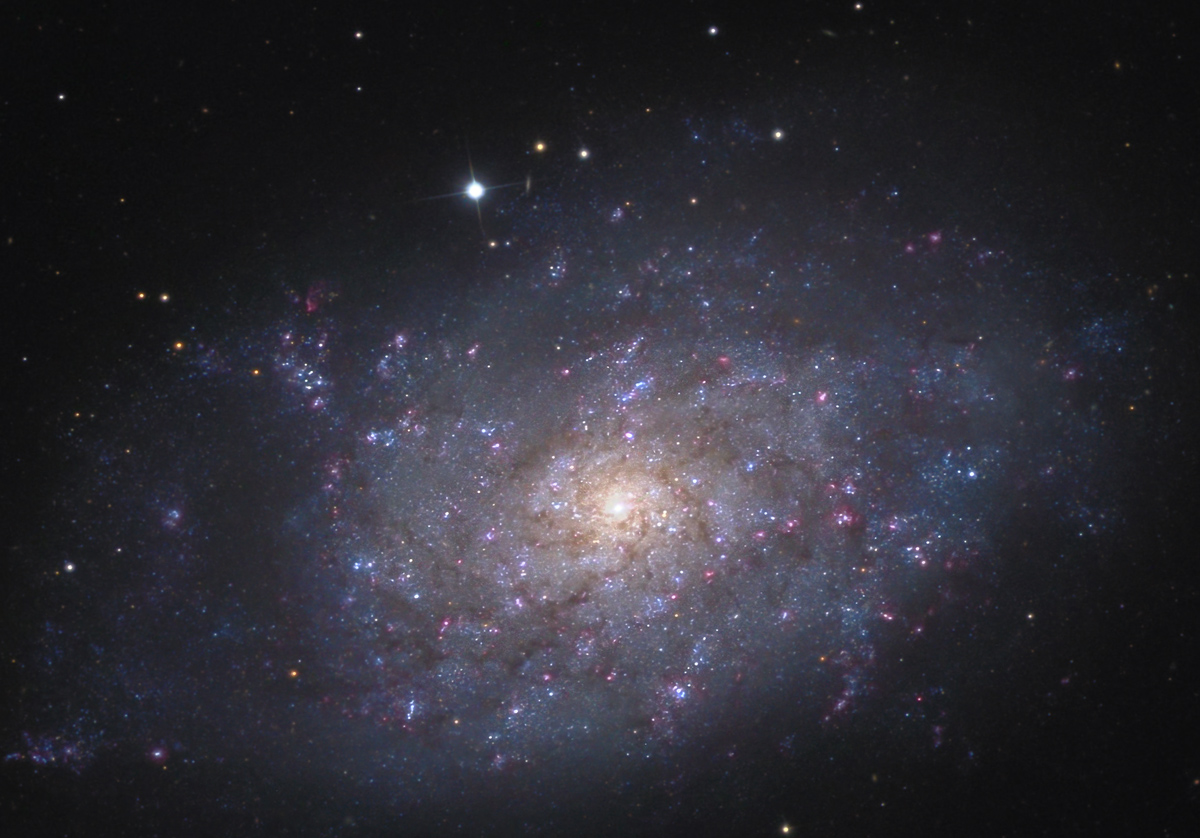Found images: 2017 July
Found images: 2017 July
Have you seen a great image or video somewhere that you think would make a great APOD? Nominate it for APOD! Please post as much information here as you have about the image/video with a link to any source(s) for it you know of here, and the editors will take a look.
When posting the image itself, please do not post anything larger than a thumbnail here; please honor the copyright holder's copyright.
Please keep hotlinked images under 400K.
Thank you!
<< Previously
Know the quiet place within your heart and touch the rainbow of possibility; be
alive to the gentle breeze of communication, and please stop being such a jerk. — Garrison Keillor
alive to the gentle breeze of communication, and please stop being such a jerk. — Garrison Keillor
ESO: The Eyes of Atacama
The Eyes of Atacama
ESO Picture of the Week | 2017 Jul 03
ESO Picture of the Week | 2017 Jul 03
[img3="Credit: Adhemar Duro/ESO"]https://cdn.eso.org/images/screen/potw1727a.jpg[/img3][hr][/hr]This picture was taken at the northern tip of the Salar de Atacama — the largest salt flat in Chile. The flat is close to the town of San Pedro de Atacama, a town in northern Chile very popular among Chilean tourists and international visitors. The salt flat is home to two similar freshwater lagoons that lie very close together: the Ojos de Salar, which translates to “Eyes of the Salt Pan”.
During the day, the site is visited by tourists, who stop by on their excursions from San Pedro de Atacama. Here, one of the two water-filled holes in the middle of the arid landscape is shown at dusk, when the site is again peaceful and quiet. The eye of water perfectly reflects the view of the sky as it changes from day to night. While the clouds on the right horizon are still been dipped in orange by the setting Sun, the sky on the left already shows some stars.
The site is not far from the Chajnantor Plateau. This high plateau, 5000 metres above sea level, hosts the Atacama Large Millimeter / submillimeter Array (ALMA) — an observatory of revolutionary design, composed of 66 high-precision antennas. The Atacama Desert is the perfect location for ALMA, as low humidity and high altitude combine to give ideal conditions for astronomical observation.
This image was taken by ESO Photo Ambassador, Adhemar Duro.
Know the quiet place within your heart and touch the rainbow of possibility; be
alive to the gentle breeze of communication, and please stop being such a jerk. — Garrison Keillor
alive to the gentle breeze of communication, and please stop being such a jerk. — Garrison Keillor
HEIC: Hubble’s Hidden Galaxy (IC 342)
Hubble’s Hidden Galaxy
ESA Hubble Picture of the Week | 2017 Jul 03
ESA Hubble Picture of the Week | 2017 Jul 03
[img3="Credit: ESA/Hubble & NASA"]https://cdn.spacetelescope.org/archives ... w1727a.jpg[/img3][hr][/hr]IC 342 is a challenging cosmic target. Although it is bright, the galaxy sits near the equator of the Milky Way’s galactic disc, where the sky is thick with glowing cosmic gas, bright stars, and dark, obscuring dust. In order for astronomers to see the intricate spiral structure of IC 342, they must gaze through a large amount of material contained within our own galaxy — no mean feat! As a result IC 342 is relatively difficult to spot and image, giving rise to its intriguing nickname: the “Hidden Galaxy”.
Located very close (in astronomical terms!) to the Milky Way, this sweeping spiral galaxy would be among the brightest in the sky were it not for its dust-obscured location. The galaxy is very active, as indicated by the range of colours visible in this NASA/ESA Hubble Space Telescope image, depicting the very central region of the galaxy. A beautiful mixture of hot, blue star-forming regions, redder, cooler regions of gas, and dark lanes of opaque dust can be seen, all swirling together around a bright core. In 2003, astronomers confirmed this core to be a specific type of central region known as an HII nucleus — a name that indicates the presence of ionised hydrogen — that is likely to be creating many hot new stars.
Know the quiet place within your heart and touch the rainbow of possibility; be
alive to the gentle breeze of communication, and please stop being such a jerk. — Garrison Keillor
alive to the gentle breeze of communication, and please stop being such a jerk. — Garrison Keillor
Re: Found images: 2017 July
Thanks, bystander, that's really fascinating! 
I searched for previous pictures that might show (or at least hint) that something interesting is going on in the center of IC 342. This 500 KB picture, by foldtime, was the best I could find.
Ann
I searched for previous pictures that might show (or at least hint) that something interesting is going on in the center of IC 342. This 500 KB picture, by foldtime, was the best I could find.
Ann
Color Commentator
Re: Found images: 2017 July
Ann wrote: I searched for previous pictures that might show (or at least hint) that something interesting is going on in the center of IC 342. This 500 KB picture, by foldtime, was the best I could find.
An APOD search for "Hidden Galaxy IC 342" brings up five different images of IC 342.
Know the quiet place within your heart and touch the rainbow of possibility; be
alive to the gentle breeze of communication, and please stop being such a jerk. — Garrison Keillor
alive to the gentle breeze of communication, and please stop being such a jerk. — Garrison Keillor
-
starsurfer
- Stellar Cartographer
- Posts: 5409
- Joined: Thu Mar 15, 2012 7:25 pm
Re: Found images: 2017 July
Rob Gendler's image shows it well.Ann wrote:Thanks, bystander, that's really fascinating!
I searched for previous pictures that might show (or at least hint) that something interesting is going on in the center of IC 342. This 500 KB picture, by foldtime, was the best I could find.
Ann
-
starsurfer
- Stellar Cartographer
- Posts: 5409
- Joined: Thu Mar 15, 2012 7:25 pm
-
starsurfer
- Stellar Cartographer
- Posts: 5409
- Joined: Thu Mar 15, 2012 7:25 pm
Re: Found images: 2017 July
Vela Supernova Remnant
http://www.astro-austral.cl/imagenes/ne ... c/info.htm
Copyright: José Joaquín Pérez
http://www.astro-austral.cl/imagenes/ne ... c/info.htm
Copyright: José Joaquín Pérez
-
russelleking
- Ensign
- Posts: 54
- Joined: Sun Jun 05, 2011 2:03 am
Re: Found images: 2017 July
K07110822
K07110822 b (also called Alpha K b is an exoplanet orbiting within the habitable zone of its' Sun, a star named K07753. Some 4 Light Years away. Also visible is a Venus type planet and its' moon. Star Date: 07032017.
Star Date: 07032017.
http://rddnj.com/RussellsMoonReflectionsJuly12012.html
Copyright: Russell King
K07110822 b (also called Alpha K b is an exoplanet orbiting within the habitable zone of its' Sun, a star named K07753. Some 4 Light Years away. Also visible is a Venus type planet and its' moon. Star Date: 07032017.
Star Date: 07032017.
http://rddnj.com/RussellsMoonReflectionsJuly12012.html
Copyright: Russell King
-
starsurfer
- Stellar Cartographer
- Posts: 5409
- Joined: Thu Mar 15, 2012 7:25 pm
Re: Found images: 2017 July
NGC 4921
http://www.adamblockphotos.com/ngc-4921.html
Copyright: Adam Block/Mount Lemmon SkyCenter/University of Arizona
http://www.adamblockphotos.com/ngc-4921.html
Copyright: Adam Block/Mount Lemmon SkyCenter/University of Arizona
-
starsurfer
- Stellar Cartographer
- Posts: 5409
- Joined: Thu Mar 15, 2012 7:25 pm
-
starsurfer
- Stellar Cartographer
- Posts: 5409
- Joined: Thu Mar 15, 2012 7:25 pm
Re: Found images: 2017 July
Witch Head Nebula (IC 2118)
http://www.astrosurf.com/ilizaso/orriak ... Q_U16m.htm
Copyright: Iñaki Lizaso
http://www.astrosurf.com/ilizaso/orriak ... Q_U16m.htm
Copyright: Iñaki Lizaso
-
starsurfer
- Stellar Cartographer
- Posts: 5409
- Joined: Thu Mar 15, 2012 7:25 pm
-
starsurfer
- Stellar Cartographer
- Posts: 5409
- Joined: Thu Mar 15, 2012 7:25 pm
-
starsurfer
- Stellar Cartographer
- Posts: 5409
- Joined: Thu Mar 15, 2012 7:25 pm
Re: Found images: 2017 July
We 5-1
http://www.chart32.de/index.php/component/k2/item/183
Copyright: CHART32
Processing: Johannes Schedler
http://www.chart32.de/index.php/component/k2/item/183
Copyright: CHART32
Processing: Johannes Schedler
-
starsurfer
- Stellar Cartographer
- Posts: 5409
- Joined: Thu Mar 15, 2012 7:25 pm
-
starsurfer
- Stellar Cartographer
- Posts: 5409
- Joined: Thu Mar 15, 2012 7:25 pm
Re: Found images: 2017 July
ESO: Hunting Stars
Hunting Stars
ESO Picture of the Week | 2017 Jul 10
ESO Picture of the Week | 2017 Jul 10
[img3="Image Credit: Yuri Beletsky (LCO)/ESO"]https://cdn.eso.org/images/screen/potw1728a.jpg[/img3][hr][/hr]In this scene, one of the most recognisable constellations in the night sky — Orion (The Hunter), with his famous belt and sword — rises over the slumbering Swedish-ESO Submillimetre Telescope (SEST) at ESO’s La Silla Observatory in Chile.
This mythical collection of stars sits on the celestial equator, making it visible in both hemispheres. Within Orion itself, the distinctive blue and pink hues of the Orion Nebula are visible just above the stellar trio comprising Orion’s Belt. Hundreds of new stars are being forged in the depths of this stellar nursery. Telescopes have observed numerous stars wrapped in cocoons of gas and dust — shrouds that will transform into protoplanetary discs as the turbulent youngsters mature.
This image also captures the noticeably reddish colours of Betelgeuse and Aldebaran — giant stars that belong to the constellations of Orion and Taurus (The Bull) respectively. These stars can be seen to the left of the telescope dish, tracing a curved line down towards the ground. Just before meeting the horizon, this line crosses a fuzzy collection of stars — the Pleiades star cluster. According to classical mythology, Orion was a hunter who chased after the Pleiades, the beautiful daughters of Atlas, in order to find love.
Know the quiet place within your heart and touch the rainbow of possibility; be
alive to the gentle breeze of communication, and please stop being such a jerk. — Garrison Keillor
alive to the gentle breeze of communication, and please stop being such a jerk. — Garrison Keillor
HEIC: Just Like Home (NGC 2500)
Just Like Home
ESA Hubble Picture of the Week | 2017 Jul 10
ESA Hubble Picture of the Week | 2017 Jul 10
[img3="Image Credit: ESA/Hubble & NASA"]https://cdn.spacetelescope.org/archives ... w1728a.jpg[/img3][hr][/hr]Discovered by British astronomer William Herschel over 200 years ago, NGC 2500 lies about 30 million light-years away in the northern constellation of Lynx (The Lynx). As this NASA/ESA Hubble Space Telescope image shows, NGC 2500 is a particular kind of spiral galaxy known as a barred spiral, its wispy arms swirling out from a bright, elongated core.
Barred spirals are actually more common than was once thought. Around two-thirds of all spiral galaxies — including the Milky Way — exhibit these straight bars cutting through their centres. These cosmic structures act as glowing nurseries for newborn stars, and funnel material towards the active core of a galaxy. NGC 2500 is still actively forming new stars, although this process appears to be occurring very unevenly. The upper half of the galaxy — where the spiral arms are slightly better defined — hosts many more star-forming regions than the lower half, as indicated by the bright, dotted islands of light.
There is another similarity between NGC 2500 and our home galaxy. Together with Andromeda, Triangulum, and many smaller natural satellites, the Milky Way is part of the Local Group of galaxies, a gathering of over 50 galaxies all loosely held together by gravity. NGC 2500 forms a similar group with some of its nearby neighbours, including NGC 2541, NGC 2552, NGC 2537, and the bright, Andromeda-like spiral NGC 2481 (known collectively as the NGC 2841 group).
Know the quiet place within your heart and touch the rainbow of possibility; be
alive to the gentle breeze of communication, and please stop being such a jerk. — Garrison Keillor
alive to the gentle breeze of communication, and please stop being such a jerk. — Garrison Keillor
-
Deep-Sky-Astroteam
- Ensign
- Posts: 54
- Joined: Tue Aug 26, 2014 9:01 am
- Location: Berlin - Germany
- Contact:
Re: Found images: 2017 July
SH2-155 Cave Nebula
Copyright: Frank Iwaszkiewicz
https://www.deep-sky-astroteam.de/en/Ne ... ave-nebula
Copyright: Frank Iwaszkiewicz
https://www.deep-sky-astroteam.de/en/Ne ... ave-nebula
-
starsurfer
- Stellar Cartographer
- Posts: 5409
- Joined: Thu Mar 15, 2012 7:25 pm
Re: Found images: 2017 July
-
starsurfer
- Stellar Cartographer
- Posts: 5409
- Joined: Thu Mar 15, 2012 7:25 pm
Re: Found images: 2017 July
Southern Crab Nebula (Hen 2-104)
http://www.pbase.com/strongmanmike2002/ ... rab_nebula
Copyright: Michael Sidonio
http://www.pbase.com/strongmanmike2002/ ... rab_nebula
Copyright: Michael Sidonio
-
starsurfer
- Stellar Cartographer
- Posts: 5409
- Joined: Thu Mar 15, 2012 7:25 pm
Re: Found images: 2017 July
WR 68 nebula and RCW 89
http://www.atacama-photographic-observa ... .php?id=76
Copyright: Thierry Demange, Richard Galli and Thomas Petit
http://www.atacama-photographic-observa ... .php?id=76
Copyright: Thierry Demange, Richard Galli and Thomas Petit
-
starsurfer
- Stellar Cartographer
- Posts: 5409
- Joined: Thu Mar 15, 2012 7:25 pm
Re: Found images: 2017 July
Sh2-200
http://outters.fr/wp/ldu14-et-sh2-200-hoo-rvb/
Copyright: Nicolas Outters Sh2-200 is the planetary nebula in the top left corner and the emission nebula at the bottom is IRAS 02589+6130.
http://outters.fr/wp/ldu14-et-sh2-200-hoo-rvb/
Copyright: Nicolas Outters Sh2-200 is the planetary nebula in the top left corner and the emission nebula at the bottom is IRAS 02589+6130.
Re: HEIC: Just Like Home (NGC 2500)
Well, wouldn't you know it - I've just explained that barred spirals have dust lanes running through their bars, and here is a picture of a barred spiral with nothing more than a few broken, wispy, disorganized dust lanes in its bar!bystander wrote:Just Like Home
ESA Hubble Picture of the Week | 2017 Jul 10[img3="Image Credit: ESA/Hubble & NASA"]https://cdn.spacetelescope.org/archives ... w1728a.jpg[/img3][hr][/hr]Discovered by British astronomer William Herschel over 200 years ago, NGC 2500 lies about 30 million light-years away in the northern constellation of Lynx (The Lynx). As this NASA/ESA Hubble Space Telescope image shows, NGC 2500 is a particular kind of spiral galaxy known as a barred spiral, its wispy arms swirling out from a bright, elongated core.
Barred spirals are actually more common than was once thought. Around two-thirds of all spiral galaxies — including the Milky Way — exhibit these straight bars cutting through their centres. These cosmic structures act as glowing nurseries for newborn stars, and funnel material towards the active core of a galaxy. NGC 2500 is still actively forming new stars, although this process appears to be occurring very unevenly. The upper half of the galaxy — where the spiral arms are slightly better defined — hosts many more star-forming regions than the lower half, as indicated by the bright, dotted islands of light.
There is another similarity between NGC 2500 and our home galaxy. Together with Andromeda, Triangulum, and many smaller natural satellites, the Milky Way is part of the Local Group of galaxies, a gathering of over 50 galaxies all loosely held together by gravity. NGC 2500 forms a similar group with some of its nearby neighbours, including NGC 2541, NGC 2552, NGC 2537, and the bright, Andromeda-like spiral NGC 2481 (known collectively as the NGC 2841 group).
[c]Disorganized galaxy of Hubble class Scd.
Photo: Josef Pöpsel.[/c]
All I can say in my defense is that NGC 2500 is a galaxy of Hubble class SBcd. And galaxies of Hubble classes Scd (unbarred) and SBcd (barred) are typically very disorganized, so we should not expect any long, unbroken, well-developed and elegant dust lanes in them.Photo: Josef Pöpsel.[/c]
It is interesting that that in galaxy NGC 2500 at least, the bar has developed before the dust lanes have formed. So it would definitely seem that the bar comes first and the dust lanes later.
Either that, or each galaxy is a law unto itself, and develops according to its position in the great dark matter latticework of the universe.
Barred spiral galaxy M95 of Hubble class SBb.
It has a bar, an inner and an outer ring and dust lanes.
Photo: Adam Block.
It has a bar, an inner and an outer ring and dust lanes.
Photo: Adam Block.
I'd like to add that NGC 2500 is not "just like home" (that is, not like the Milky Way), because NGC 2500 belongs to Hubble class SBcd. The Milky Way may well belong to Hubble class SBb, which would make it more similar to barred spiral galaxy M95 than to NGC 2500. Or maybe it is more similar to M109 than to M95. M109 can be seen here in a picture by Daniel Duggan.
Ann
Color Commentator




